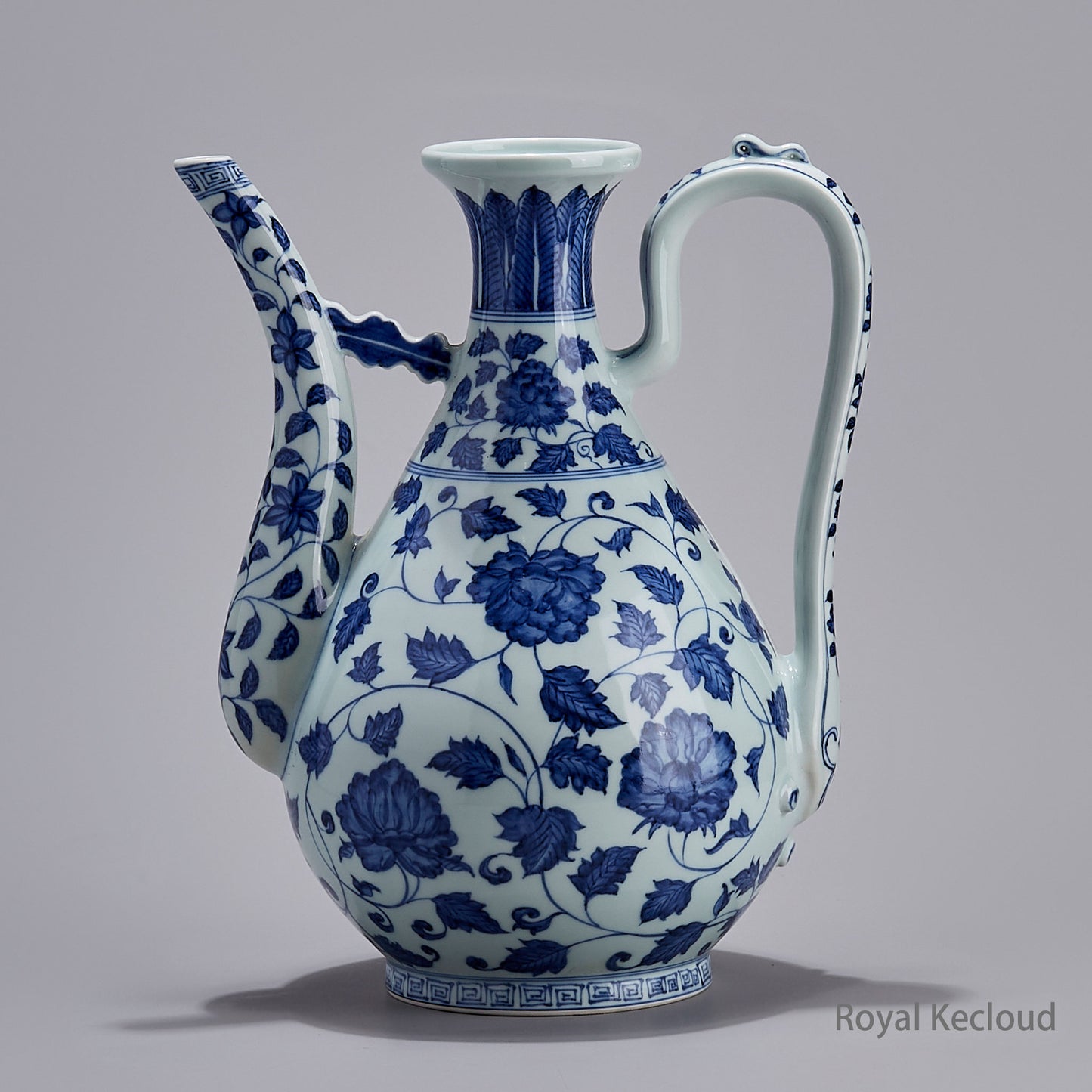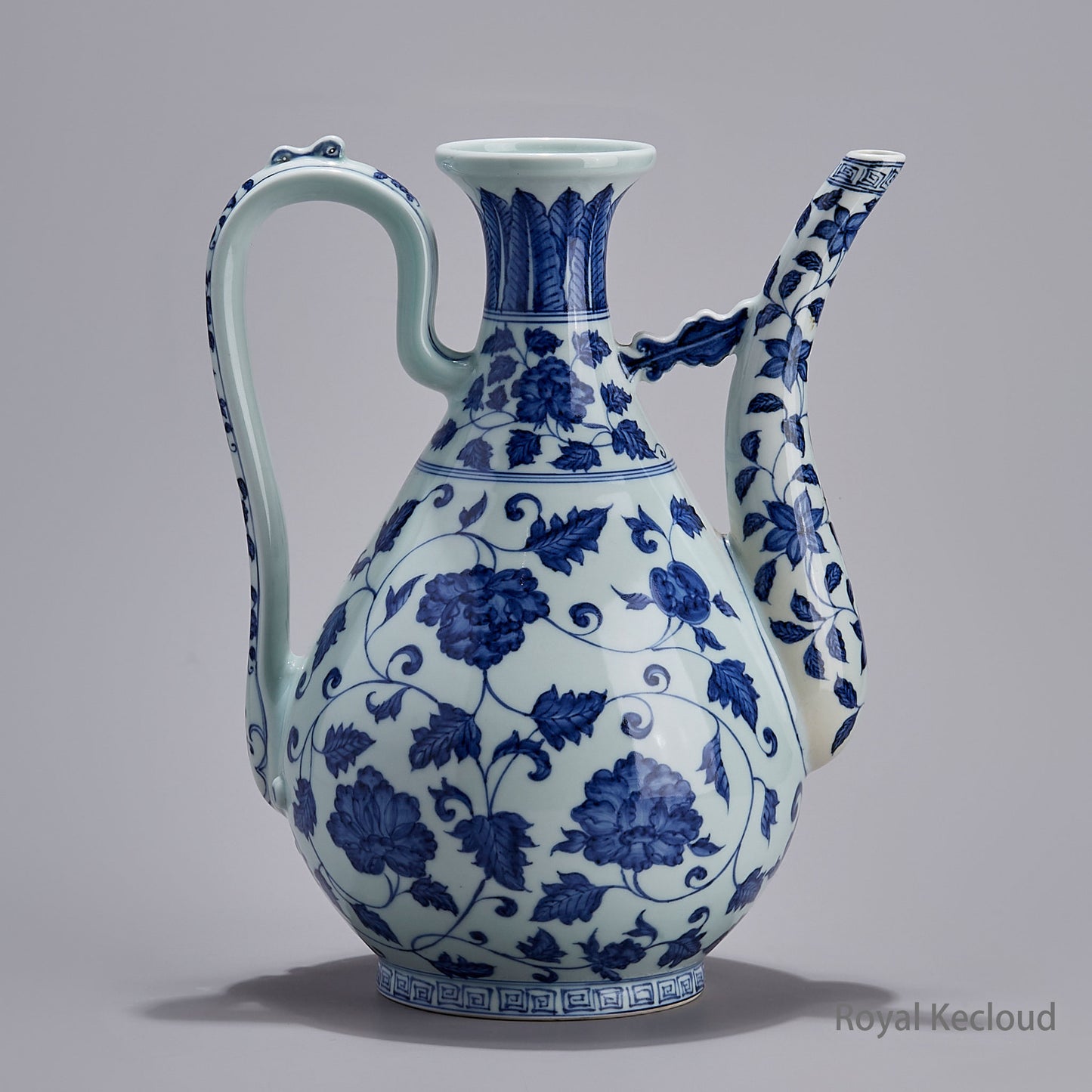

About the Item
Description
The pear-shaped body is superbly potted with an elegant spout, joined to the neck with a cloud-shaped strut opposite a ridged loop handle above three moulded bosses simulating studs holding the handle in place, finely painted in tones of cobalt to each sides of the body and tapered neck with large blooms of peony flowers borne on scrolling vines growing leaves to the sides, a band of upright plantain leaves around the upper neck. Ewers are liquor vessels derived from water droppers (zhu zi). Those dating to the Ming dynasty frequently possess long tapered necks, curved spouts, and bent handles.
Details
• Function: Decorative crafts, Tabletop Vase, Perfect Gift.
• Glaze type: Blue-and-white.
• Materials & Techniques: Ceramic, Hand-Painted.
• Packaging: Box
• Place of Origin: Jingdezhen, China, the home to handcrafting royal porcelain for royal families worldwide.
Delivery
Shipping and Lead Time
All items are handcrafted by folk artists and craftmen. It usually takes about 3 months to finish a product. We kindly suggest that you contact us before you place an order. Each order is carefully inspected and packaged before it leaves our warehouse to avoid damage during transit.
Lead Time: 105 calendar days after order confirmed and payment made.
Custom Order Only
Because of the nature of this category arts, we provide custom orders only.
Embedding Families or Organizations Names:
As porcelain antiques may be inherited for thousands years. We may embed your family or organization names inside or on the bottom as Chinese Royal Families (Emperors) did, to record the honors of your families and organizations and pass to generations and generations.
Please contact us by email.
Couriers
We use DHL or Fedex by air. The tracking information will be sent to you when your order shipped.
Please inspect your package immediately upon arrival and report any damages/errors within 3 business days.
Returns
Customer satisfaction is our top priority. We check each piece of items before deliver to insure quality.
These handcrafted masterpieces are not allowed for return, except for quality issues, damage, or wrong items upon the receipt of items.
The returned/exchanged product must be in its original condition, unused and in its original packaging. Special order items cannot be returned.
As soon as you return your item to us and it's received into our system, we will expeditiously send a refund request to your bank. Please note that while the funds are instantly deducted from our account, some banks may take 5-7 business days to process and post these refunds to your account.
About “YuHuChunPing”
Yuhuchun first appeared in the temples of the Tang dynasty (608–917 AD) as a holy water vase. By the Song dynasty (960-1279) the form had become a popular type of wine vessel. During the Yuan dynasty (1271–1368) the shape became more refined as well as being decorated with both underglaze blue and red. This tradition continued into the Ming dynasty (1368–1644) and into the Qing dynasty (1644-1912). Today they are often referred to as "Pear Shaped vases". During the Yuan and Ming dynasties the form was further adapted by the addition of handles and spouts for wine.

